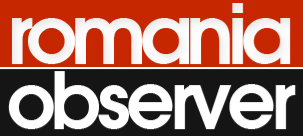The European Commission approved on Wednesday the final version of Romania's National Recovery and Resilience Plan, Minister of European Investments and Projects Dragos Pislaru announced in a press conference, adding that the document will be released on the Commission's website in the near future."The next step is rather a formal approval in the ECOFIN Council meeting this November, and I can tell you that after more than three months of intense work, constructive dialogue and very difficult negotiations with the European Commission's team, we are today in for the finish line as regards the approval of the NRRP revision," said Pislaru.According to him, the new amount available under the NRRP facility is EUR 21.41 billion.Pislaru went on to say that Romania's NRRP has been restructured to address major inefficiencies, including over-contracted and delayed projects. Originally tied to EUR 47.4 billion in commitments - far beyond the EUR 28.5 billion allocation - the plan now totals EUR 21.41 billion, with EUR 13.57 billion in grants and EUR 7.84 billion in loans. The minister assured that the revised version is realistic, sustainable, and implementable by August 31, 2026.He added that it is very important that the structure of the payment requests is understood and announced that he will discuss the submission of the fourth request on Friday in Brussels."The revision of the NRRP had two goals. First, regarding the application of Article 21 of the European Regulation, which allows adjustments when objective circumstances arise, which were more than objective in the case of Romania. (...) The other is the simplification of the Plan. I am happy to be able to confirm that redundant milestones were removed and indicators refined to improve monitoring and implementation predictability. The overhaul aims to mitigate budget deficit pressures in 2025 - 2026, secure EU funding, avoid penalties caused by delays or failure to settle reforms, safeguard priority investments and show the Romanian people some hard-fact results," Dragos Pislaru explained.He pointed out that major risk investments were eliminated from the NRRP and mentioned that the EUR 2.17 billion financing of the A7 [Moldova Motorway] was moved to grants."We have shifted 26 well-advanced investments from loans to grants - worth EUR 5.7 billion - to secure non-repayable funding. On top of that, we added EUR 254 million to three key projects and introduced new ones, like capitalizing the Investment and Development Bank, buying modern ambulances, and supporting green energy with another EUR 350 million. Notably, the A7 motorway's EUR 2.17 billion financing is now covered by grants, approved by the European Commission. The Renovation Wave now includes EUR 1.39 billion in grants, and we've kept strategic investments in digitalization, government cloud, and automation. Eight hospitals and 1,200 ambulances remain in the plan until August 31," stated Pislaru.The European projects official specified that fiscal milestones have also been reformulated, including ANAF's reorganization, so as to boost efficiency and revenue. "After the fourth payment request, we expect two more - No. 5 around May, and the final one by August 31, 2026. We've simplified the plan, cutting milestones from 518 to 390. So far, we've received EUR 10.72 billion - about half the total allocation. Our goal is to bring the remaining funds into the budget soon. With NRRP and Cohesion Fund money totaling around EUR 15 billion available for the economy over the next year, we are almost certain that no economic crisis will hit Romania. This revised plan is realistic, focused on results, and key to Romania's development," Pislaru declared.The official underscored that reforms are a crucial component in the NRRP and a prerequisite for the money to be unlocked.

